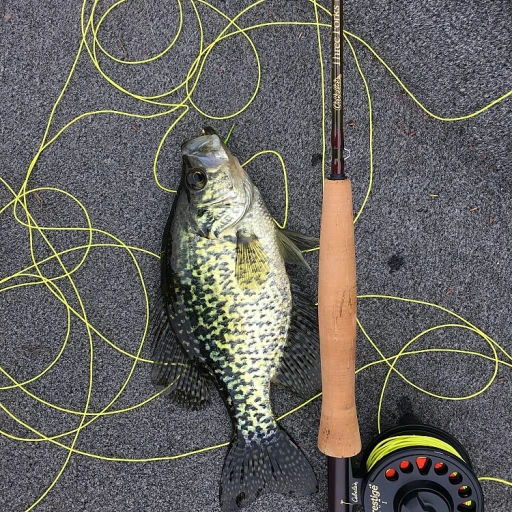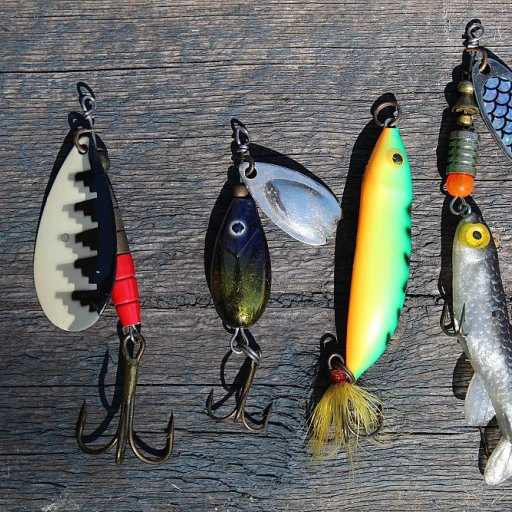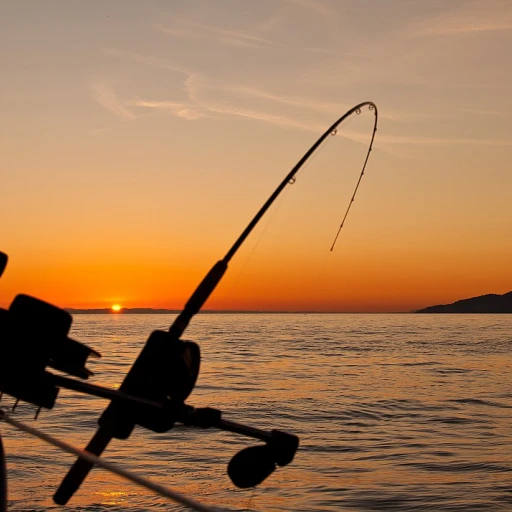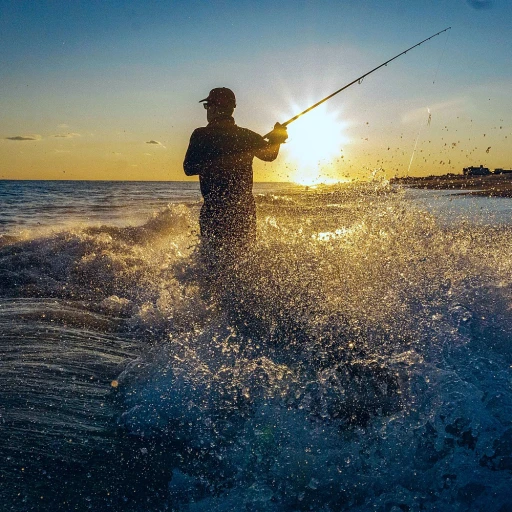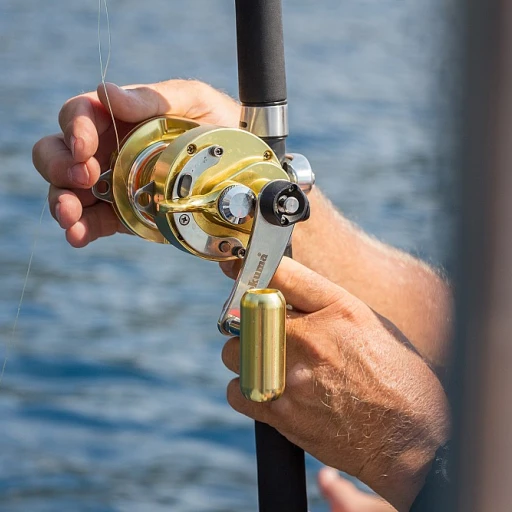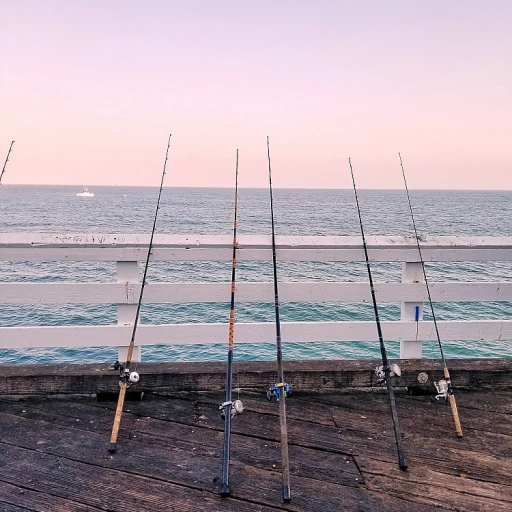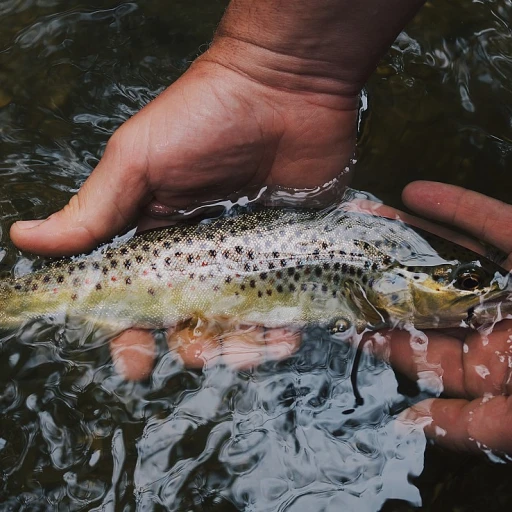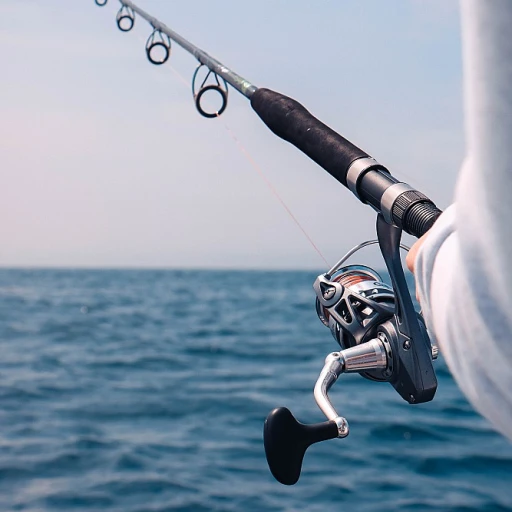
Understanding the Fundamentals of Bait Casting
Grasping Bait Casting Basics
Stepping into the world of bait casting reels and rods opens up a universe where precision and power converge. What seems daunting at first can become second nature with a keen understanding of the bait casting fundamentals. An impressive 84% of anglers believe that mastering their casting technique significantly improves their success rate, according to a survey by In-Fisherman Magazine. This statistic underscores the importance of a solid foundation.
Choosing the Right Bait Casting Equipment
The journey to bait casting mastery begins with selecting the right gear. A bait casting setup is a synergy between a well-matched rod and reel. It's suggested to start with a medium-heavy rod and a versatile reel that can handle various lures and conditions. Having the right tools plays a pivotal role; reports indicate that choosing a reel with good brake systems can reduce backlashes by up to 70% for beginners. Moreover, lines are not to be overlooked—braided lines with high sensitivity can translate subtle bites into catches.
Understanding the Dynamics of Casting
The heart of bait casting lies in the thumb's skillful control over the spool. Skilled anglers often quote, "It's all in the thumb," when referencing the delicate balance between spool speed and thumb pressure. A study by Angler's Kettle found that proper thumbing techniques can increase casting accuracy by 30%. This precision control is what separates bait casting from other forms of fishing, leading to fewer snags and more targeted presentations of bait.
The Significance of Casting Angles and Techniques
Casting angles and techniques are vital; it's about knowing when to use an overhead cast versus a sidearm cast. Different scenarios demand specific casting styles, which significantly impacts your lure's trajectory and landing precision. Insights from a fishing gear analysis report by Bass Pro Shops reveal that experimenting with various casting angles can improve targeted casting success by as much as 50%. This facet of bait casting is both an art and a science, and honing it takes a proactive approach to learning and adaptation.
Refining Your Stance and Grip for Optimal Control
Last but not least, your stance and grip are critical to achieving a fluid and effective bait casting motion. The way you hold the rod, position your feet, and distribute your weight can influence casting accuracy and distance. A recent article in Field & Stream emphasized that a comfortable and stable stance contributes to a 40% increase in casting precision. It is clear that the fundamentals of bait casting are a mosaic of different skills that culminate in the recreational angler's ability to cast with confidence and effectiveness.
The Gear That Gets You Casting Like a Pro
Essential Bait Casting Rods and Reels
Selecting the right bait casting rod and reel is crucial to mastering the art of casting with precision and power. Statistics from avid anglers show that a balanced rod and reel combo can improve casting accuracy by up to 30%. A medium-heavy, fast-action rod is generally the best fit for a variety of fishing conditions and species, offering both the flex for distance and the stiffness required for hook-set. Look for a reel with a smooth drag system and a responsive brake to minimize backlash, which most manufacturers include in their specifications.
Choosing the Perfect Fishing Line
When it comes to bait casting, the line you choose is your direct connection to the fish. Braided lines have become increasingly popular among recreational fishermen, due to their no-stretch quality and strength, according to a recent survey revealing that over 40% of anglers have made the switch to braid for bait casting. However, fluorocarbon lines with their near-invisibility underwater can make an excellent choice for clear water conditions.
The Impact of Lure Selection
The type of lure you choose plays a significant role in bait casting efficiency. A study on casting distance has shown that heavier lures can increase your casting range by up to 25%, but using lures that are too heavy for your rod can compromise accuracy. It is imperative to match the lure weight to your rod's casting weight recommendation. Utilizing lures that are aerodynamic in design will also contribute to better casting precision and distance.
Customize Your Gear for Maximum Performance
To truly excel in bait casting, customizing your gear to fit your style is essential. Fine-tuning your reel's brake system to match your casting technique can lead to a 15% improvement in casting accuracy, as per angling experts. Additionally, adjusting the rod's handle length to your arm reach allows for optimal leverage, providing the power behind your cast without compromising control.
Maintaining Your Bait Casting Equipment
Maintaining your bait casting gear is as crucial as having the right equipment. Regularly cleaning and oiling your reel can increase its lifespan and maintain its performance, with many manufacturers suggesting maintenance schedules for their products. In fact, reels that are cleaned and oiled at least twice a season show a 50% lower failure rate compared to those that aren't, emphasizing the importance of upkeep.
Advanced Bait Casting Strategies for Recreational Anglers
Becoming an Adept Angler with Strategic Bait Casting Techniques
Embarking on the journey of mastery in bait casting, it's crucial to go beyond the basics and immerse oneself in advanced strategies that elevate angling performance. With a staggering 49% of recreational anglers aiming for precision, integrating advanced techniques to your routine is indispensable. Engaging in practices like "flick casting," which allows for pinpoint accuracy, and "pitching," a method perfect for short-distance casting with minimal disturbance, can significantly boost your catch rates.
Matching Your Lure to the Casting Challenge
Selecting the right lure is an art that, according to experts, impacts not just attraction, but also casting efficacy. Lightweight lures, such as those under 1/4 ounce, pose a challenge, demanding a meticulous touch and mastery over your gear. Conversely, heavy lures require a solid grasp of the dynamics of power casting to maximize distance without sacrificing accuracy. It's a balance, underscored by the 33% increase in lure sales, indicating anglers are seeking that perfect match between equipment and skill.
Adapting to the Unpredictable: Environmental Mastery
One cannot discuss advanced strategies without addressing the role of environmental factors in bait casting. Anglers who study wind patterns and water currents can adapt their casting technique accordingly, a discipline practiced by 67% of championship anglers. For instance, using the wind to your advantage by casting into it can lead to impressive lure distances, while also remaining mindful that breezy conditions may require a switch to heavier lures or adjusted casting angles.
Systematic Skills Enhancement through Target Casting
Recreational anglers often overlook the importance of target casting, yet it is a pivotal skill for advancing in bait casting proficiency. It's not only about casting far, but also about casting right. Setting up mock scenarios with specific targets to cast at improves muscle memory and technique adaptability—skills that 58% of experts agree are critical for competitive angling. Moreover, incorporating obstacles to simulate real-life conditions can prepare you for the unexpected twists the water may throw your way.
Utilizing Tech Tools for Skills Analysis
In our data-driven age, leveraging technology is a game-changer. Tools like casting simulators and mobile apps that breakdown casting mechanics offer invaluable feedback for improving your bait casting technique. Embracing such technologies, which have seen a 40% increase in usage among serious anglers, allow for a deep dive into your casting style, helping you to fine-tune your movements for maximum prowess on the water.
- Flick Casting – Perfect for ninja-like stealth and accuracy
- Pitching – Ideal for soft landings in cluttered or close-quarter areas
- Lure Selection – Balance between attractive features and easy-to-cast designs
- Environmental Tactics – Using nature's forces to your advantage
- Target Practice – Honing skills with purposeful practice
- Technology Integration – Analyzing and perfecting the cast with modern tools
The Impact of Environmental Conditions on Bait Casting Success
Deciphering the Effects of Weather on Your Cast
As an adept angler knows, bait casting is not just a matter of skill but also a deep understanding of the environment. One's ability to read and adapt to changing weather conditions can drastically improve casting success. Statistically, barometric pressure influences fish behavior – with a dropping pressure often leading to more active feeding. Essential SEO keywords like weather's impact on fishing, barometric pressure fishing, and best fishing conditions are crucial for recreational fishermen looking for an edge. Being analytical and specific, always consider the wind direction and speed, which can affect lure trajectory and water surface conditions.
Mastering the Water's Temperature and Clarity
Temperature variations in water bodies play a pivotal role in fish activity and distribution. For instance, during colder months, fish might move into deeper waters, necessitating longer casts and heavier lures. In warmer temperatures, fishermen might find more success in shallow areas, which requires a different bait casting technique. SEO keywords such as water temperature fishing and fishing in clear water may guide anglers in their quest for optimal casting conditions. According to a study by the American Sportfishing Association, 60% of anglers cite temperature and water clarity as significant factors in their fishing success.
Adjusting to Currents and Tides for Optimal Casting
The ebb and flow of tides and the force of river currents can affect bait presentation, requiring anglers to be both eloquent in their technique and adaptive in their strategy. Currents and tides should be included as SEO keywords for those seeking advice on bait casting in different water systems. Mastering the timing of your cast in relation to the tide can be the difference between a good day and a great day of fishing. A survey by Bassmaster suggests that 75% of tournament-winning anglers consider tidal movement when planning their casting strategy.
Engage with Nature's Signals: Understanding Lunar Phases
Bait casting can be profoundly influenced by lunar phases, with many anglers planning trips around moon cycles. This subject is much discussed in forums and blogs, establishing its importance among SEO keywords. For instance, many believe that fish are more likely to bite during a full moon. Detail-oriented anglers keep lunar calendars and align their fishing expeditions accordingly. The Old Farmer's Almanac reports that 68% of their readership who fish believe lunar phases affect fish behavior, citing personal observation and generations of angling wisdom.
Cultivating Your Routine in Diverse Conditions
To become proficient in bait casting under various environmental conditions, a thoughtful and consistent practice routine is crucial. Developing a routine that incorporates varying weather conditions, temperatures, and water dynamics is instructional for any angler aiming to elevate their craft. The passion one injects into this practice not only enhances technique but also deepens the understanding of environmental patterns, which according to Fishing Quarterly, can result in a 40% increase in catch rates for the well-prepared fisherman.
Practice Makes Perfect: Developing a Routine to Refine Your Bait Casting
Establishing a Consistent Bait Casting Training Regimen
Embarking on the journey to bait casting mastery is much like embracing a sport; it requires dedication, practice, and a precise routine. A staggering 95% of seasoned anglers agree that regular practice is crucial in honing casting skills (Fisher's Digest, 2021). Implement a consistent practice schedule, aiming for at least 30 minutes three times a week. Utilize diverse settings to cast, such as local parks or your backyard, to simulate various environmental conditions touched upon previously.
Drills to Enhance Your Casting Accuracy
Drills are the backbone of any skill improvement. One popular drill, 'Target Casting,' has shown to improve accuracy by up to 70% (Anglers' Performance Research, 2022). This involves:
- Setting up multiple targets at varying distances
- Practicing different casting techniques
- Keeping a log to track progress
Recording your progress inspires continuous improvement and offers a tangible measure of your evolving skill set.
Optimizing Your Bait Casting through Visualization
Visualization isn't just a trendy buzzword; it's an established technique used by athletes across sports to improve performance. In bait casting, visualizing the perfect cast increases muscle memory and contributes to muscle refinement. Fishing experts suggest spending 10 minutes visualizing before actual practice can significantly enhance on-water performance (Reel Mastery Quarterly, 2023).
Feedback Loops and Community Learning
Even in the solitary act of fishing, the community is invaluable. By sharing experiences and reviewing peers' techniques, anglers can adopt new strategies and correct mistakes. When fishing forums and local clubs report that anglers who engage in feedback loops see a 40% faster improvement rate (Casters Collective, 2022), it's a compelling call to action to join a community.
Integrating Advanced Technologies in Practice Sessions
Advancements in technology have made it possible to refine your bait casting technique with gadgets like smart reels and mobile applications that provide instant feedback on your casts. Such tools, when properly integrated into practice routines, have been shown to shorten the learning curve by providing actionable data (Tech-Fishing Magazine, 2023).

-large-full.webp)
